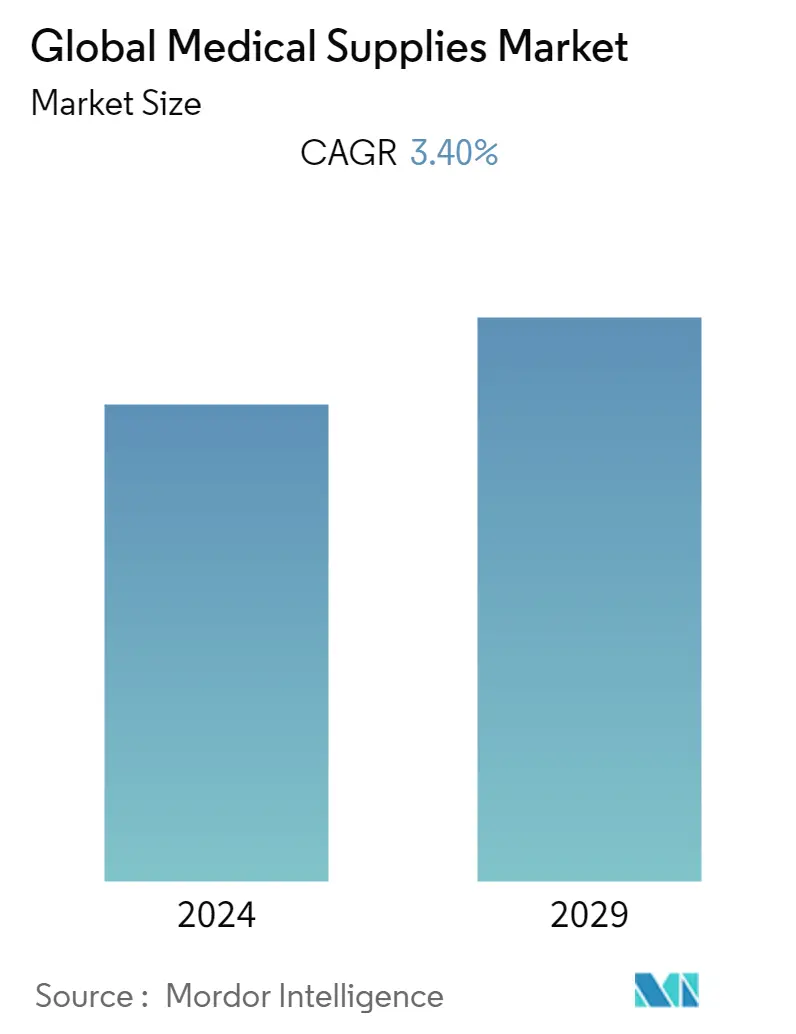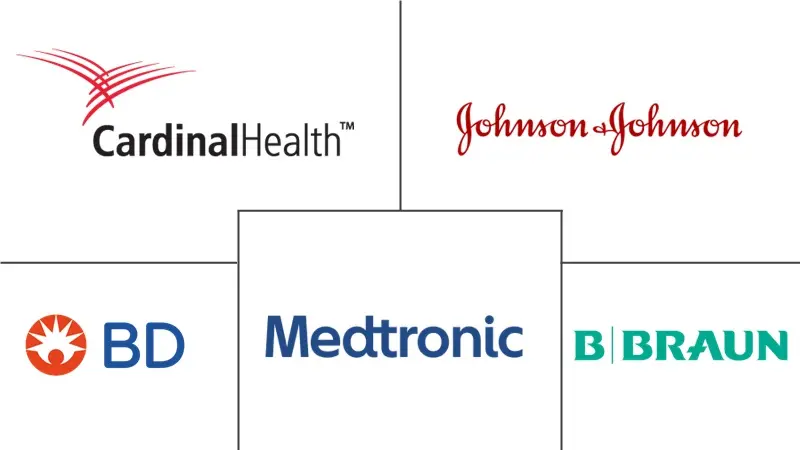Market Size of Global Medical Supplies Industry

| Study Period | 2019 - 2029 |
| Base Year For Estimation | 2023 |
| CAGR | 3.40 % |
| Fastest Growing Market | Asia-Pacific |
| Largest Market | North America |
| Market Concentration | Low |
Major Players
*Disclaimer: Major Players sorted in no particular order |
Need a report that reflects how COVID-19 has impacted this market and its growth?
Medical Supplies Market Analysis
The Medical Supplies Market is expected to register a CAGR of 3.4% over the forecast period, 2022-2027. The COVID-19 pandemic had a mixed impact on the market. Currently, countries continue to face the huge threat of the pandemic. The supply chain disruption caused due to COVID-19 led to shortages of critical medical supplies worldwide. Therefore, many countries have taken definite measures to ease the shortages by importing supplies.
According to 'FDA,' July 2022, due to the COVID-19 pandemic, several restrictive measures have been implemented by the State federation's governments. Section 506J of the Federal Food, Drug, and Cosmetic Act (FD&C Act) reflects the categories of devices that Food and Drug Administration (FDA) has determined to be in shortage and maintained and updated as the COVID-19 public health emergency evolves. The major medical supplies in shortage are Dialysis-Related Products, Personal Protective Equipment, Testing Supplies and Equipment and Ventilation-Related Products. The shortage led to high demand for medical supplies, significantly contributing to the market.
According to 'Kaufman Hall National Hospital Flash Report,' published in January 2022, there is an increase of 20.6% in Hospital expenses per patient from 2019 to 2021 caused due to shortage of medical supplies. The most recent surges triggered by the delta and omicron variants have added even more pressure to hospitals. Adoption of suboptimal substitutes is a major issue in supply chain networks in hospitals. Following the pandemic, businesses may consider reducing dependence by implementing modern production techniques like additive manufacturing. Just in Time (JIT) policy was the standard in manufacturing companies prior to the pandemic. Supply chain agents maintain little finished goods or raw material inventory in the supply chain network under a just-in-time policy. But several of the products, including hand sanitizers and toilet paper, saw a sharp rise in demand. Therefore, there was a severe shortage of both raw materials and production capacity for the enterprises. As a result, the above response to COVID-19 implies that, while JIT may provide lower inventory costs, it is not appropriate during times of crisis. Hence, it will be necessary to change the sourcing strategy from global to local in the post-pandemic era. Supply chain managers take steps to change their global sourcing and work to find and promote local sources that offer comparable quality raw materials close to their production facilities. Hence there is high competition among the global as well as local players. Therefore, the post-pandemic period is expected to see an increase in the demand for medical supplies in the region.
Chronic diseases are the most prevalent health condition that involves significant expenditure. Chronic diseases include cancer, diabetes, hypertension, stroke, heart disease, respiratory diseases, arthritis, and obesity, which can lead to hospitalization, long-term disability, reduced quality of life, and even death. According to the World Health Organization (WHO), by 2022 approximately 422 million worldwide have diabetes in 2021, and 1.5 million deaths are directly attributed to diabetes each year. Both the number of cases and the prevalence of diabetes have been steadily increasing over the past few decades. According to the 'first comprehensive global analysis of trends in hypertension prevalence, detection, treatment and control' published in August 2021, the number of adults aged 30-79 years with hypertension has increased from 650 million to 1.28 billion in the last 30 years. The increasing prevalence of chronic and lifestyle diseases, and the high volume of cases of injuries places a great demand for medical supplies products. The high demand for market supplies drives the growth of the market.
Therefore, the factors mentioned above are attributed collectively to the studied market growth over the forecast period. However, a stringent regulatory framework is expected to hinder market growth over the forecast period.

